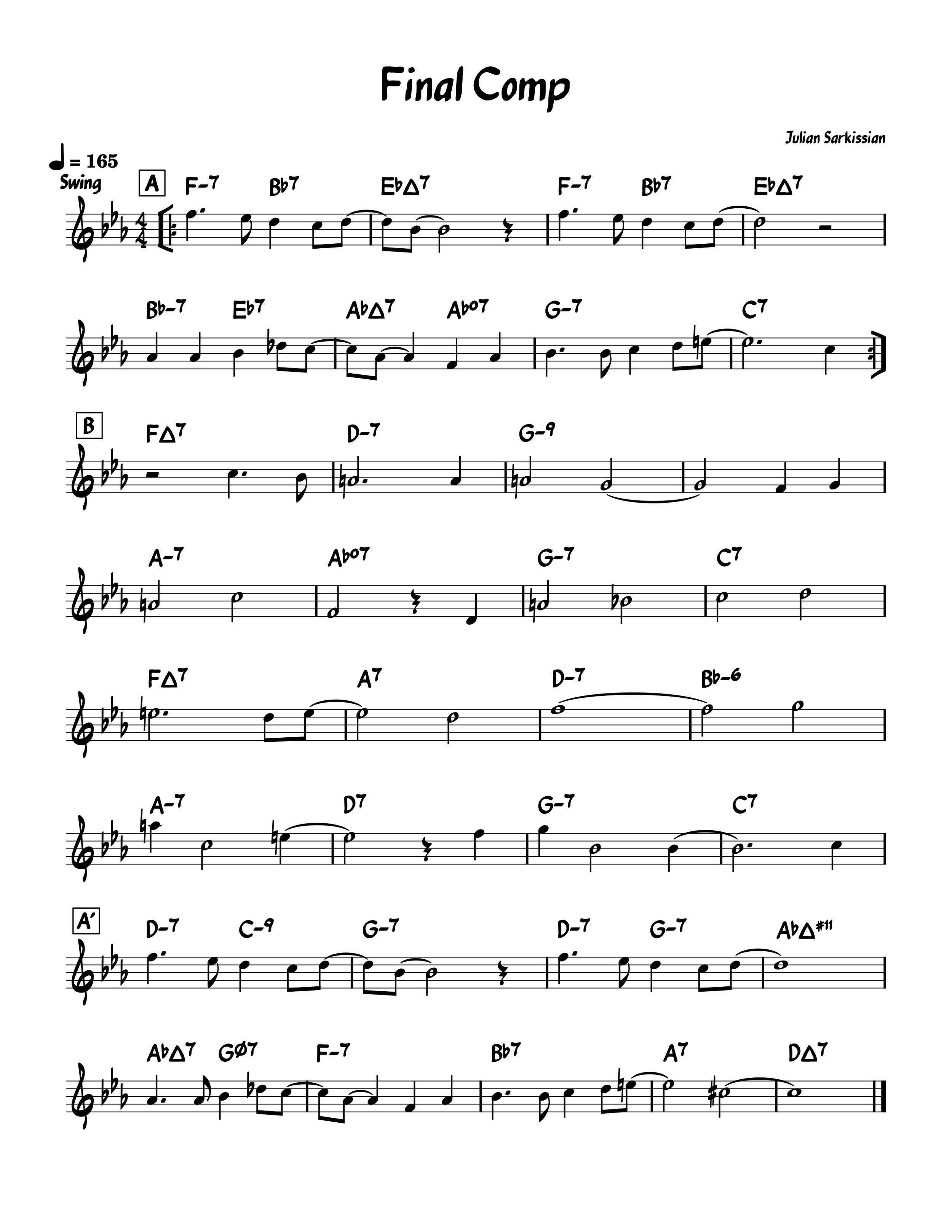
Student Work
Bachelor in Science in Sound Engineering
University of Michigan, Ann Arbor
EECS 215 - Intro to Circuits
Winter 2024
LAB 3 - Amplifiers
I analyzed and built different types of amplifier circuits using op-amps. Shown below is a two-stage non-inverting amplifier.
The actual gain was 123.24
LAB 4 - RLC Circuits
I built an RC, RL, and RLC circuit to observe how it responded to a square pulse.
Simple series RL & RC circuit response to square pulse. The orange is my calculated theoretical response, and the blue is what I measured.
The discrepancy in the RL measured comes from the internal resistance of the inductor, which I did not account for in my calculation. This led to a difference in the time constant.
I built a simple series RLC circuit with a potentiometer so we could observe different types of damping, and in the end tune the circuit to its resonant frequency (critical damping).
The image shown is of the circuit underdamped.
LAB 5 - Active Filters
I built a two-stage Sallen-Key low pass filter. I started by building each stage and then analyzing them separately. The picture and Bode plot below are for the final two-stage filter.
JAZZ 220/221 - Theory & Improvisation
Fall 2023 -> Winter 2024
This was my final composition for my introductory Jazz theory class. This class had us perform in small groups each week, working on improvisational skills. This final project was a culmination of everything we had learned through our two semesters, and for me was an exercise in really nailing the fundamentals.
As a side note, we had to reharmonize the melody for the final A section, and I don’t particularly enjoy how mine turned out, especially the ending.
PAT 331/332 - Studio Production
Fall 2023 -> Winter 2024
I mixed this track, which was written and recorded by my friends.
Kick - B52
Snare - SM57
OH - C414
Room - TLM 193
API Preamps
This track was a big lesson in frequency masking and automation. The song needed to build up over time, but not become a blur of sound by the end. I used a lot of subtractive EQ. And to reign in the bass of certain instruments I used multi-band compression.
A cover of Jack Johnson’s “Breakdown.”
I was a co-recording engineer for this project. What you hear is the pre-mix version, so this is just the edited raw recordings with no post-processing; the only processing comes from the gear we recorded with, which included a few compressors and EQ’s.
Original group composition, using sounds we made with VCV rack.
Mixed by Clayton Wade.
A sequenced FM bass sound.
Tracking the guitar:
SM81 with tape around grills to eliminate proximity effect.
Ukulele was tracked with the same mic, but without the tape and placed over the shoulder downward into the body of the Uke.
Ran through Pendulum OCL-2
Kick through the dbx 160SL.
Snare through a Distressor (not pictured).
Just me and a friend messing around in VCV rack. We later used samples from this in our final track.
Us in the studio!
This is the bass sound in the beginning that ramps up. The effect was achieved by manipulating the time control of the delay in real time.
PAT 204 - Creative Coding for Music
Winter 2023
“Orbs”
Each orb represents a granular synthesizer playing in Max MSP. The pitch/timbre of the synths is controlled by the physics of the orbs, controlled by Processing. And depending on which wall they hit, a different effect is added (delay, chorus, phaser, or flanger). If you press the "r" key, you activate the reverb that turns on when the orbs get close to each other. You can also use WASD to control the acceleration of the orbs.
“Weird Synth”
A modular synth that makes weird sounds.
“Weggle” - Final Project
The name comes from how it’s just the game Peggle but with weather. The sounds were made using Max MSP, and the visuals using Processing. The programs communicate with each other to make everything work.
The weather sounds are made using granular synthesis, while the bells are made using FM synthesis.
PAT 202 - Electronic Music Composition Seminar
Winter 2023
Digital instruments and vocal audio.
Ableton Live
From a MIDI “seed” — digital instruments.
Ableton Live
Remix of composition by Adithya Sastry.
Logic Pro
All recorded audio.
Logic Pro
Using only the Ableton Live Sampler and Simpler.
Ableton Live
Logic Pro
First foray into production in our school’s professional-level studio.
Co-Producer Lukas Nepomuceno.
Ableton Live
PAT 102 - Acoustics & Psychoacoustics
Winter 2023
Zither
Project 2 - Instrument Construction
Julian Sarkissian, Jazzy Sen, Lukas Nepomuceno, Eva Choi
We were tasked to build three instruments (one wind, one string, and one percussion) using scrap materials we could find on campus. We chose to build a whistle, a zither, and a shaker. The whistle was the most complicated and difficult to make, but we think it turned out the best. Since the zither’s strings are paracord, they don’t resonate very well, and neither does the wooden box we glued together. The shaker was our cop-out since we had spent so much time on everything else.
Whistle
Shaker
The Evolution of Acoustic Localization: From Sea to Land and Back Again
Final Paper
There exist a vast number of animal species that hear in their own unique ways, each tailored to their specific survival and lifestyle needs. An animal’s hearing, humans included, depends on what information they need to avoid predators, find food, and reproduce. This essay explores the evolution of the ear between major animal groups—fish, reptiles, birds, and mammals—to understand how animals localize sound with different hearing mechanisms.
PAT 201 - Electronic Music Composition Seminar
Fall 2022
From field recordings and audio manipulation.
ProTools
Digital instruments and audio.
Ableton Live
Loop-based.
Ableton Live
PAT 101 - Electronic Music History and Theory
Fall 2022
Exploration of gestures and textures.
Ableton Live

















